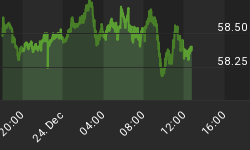An ETF explosion has taken over the financial market as exchange-traded funds enjoy the lion’s share of investment dollars globally--even as investors continue flocking to passive funds and shunning actively-managed mutual funds.
The sheer growth numbers have industry punters licking their chops.
From just a handful of offerings a couple of decades ago, we're now bombarded with a cornucopia of everything ETF: 136 providers in the United States now offer 2,062 ETFs to investors backed by an impressive $5 trillion in assets under management (AUM).
According to the latest report by independent ETF research firm, ETFGI, assets invested in the global ETFs and ETPs (exchange-traded products) space exceeded 7 trillion by the end of August, a record for the industry.
The ETF industry is now much bigger than the mutual fund industry.
Yet, these could simply be the early innings, with the burgeoning industry set to scale to even bigger heights thanks to the SEC recently creating a more level playing field after watering down its arduous exemptive relief rule.
Unfortunately, the same cannot be said about energy ETFs.
Energy ETFs have roundly underperformed most U.S. sectors over the past decade, and the Covid-19 pandemic and energy crisis have only served to make a bad situation worse.
Investing in Mainstream Energy ETFs
With the energy sector going through another of those notorious bust cycles, exchange-traded funds in the space have, predictably, been getting the cold shoulder from the investing universe with the majority of the 82 energy ETFs listed on ETFdb deeply in the red in the year-to-date. For instance, the energy sector’s biggest and most popular ETF, the Energy Select Sector SPDR Fund (XLE), has lost 42% YTD. Not surprisingly, thematic products such as inverse, bear and clean energy ETFs have been outperforming their more mainstream brethren. Still, niche ETFs are, by definition, non-diversified while bigger funds tend to be heavily diversified thus providing a bigger measure of downside protection.
Related: The Debt Crisis Is Mounting For Oil Economies
As Winston Churchill once admonished to never let a good crisis go to waste, some beaten-down ETFs might be screaming bargains that offer nice entry points for investors who believe energy prices will eventually bounce back.
Here are 3 energy ETFs that have been weathering the six-year energy downturn better than most.
Energy Select Sector SPDR Fund (XLE) 10-Year Change

Source: CNN Money
#1. First Trust NASDAQ Clean Edge Green Energy Index Fund (QCLN)
AUM: $252.66M
Expense ratio: 0.60%
10-Year Total Returns: 207.5%
YTD Return: 66.4%
The First Trust NASDAQ Clean Edge Green Energy Index Fund (QCLN) is an ETF managed by First Trust Advisors L.P. The fund invests in growth and value stocks of energy, oil, gas and consumable fuel companies that directly promote environmental responsibility.The index is designed to track the performance of small, mid and large cap clean energy companies in the United States.
QCLN has managed a total return (including dividends) of 207.5% over the past 10 years. That might not compare well with the S&P 500’s total return of 245.2% but still handily beats the -16.3% return by XLE over the timeframe.

Source: CNN Money
#2. Invesco Cleantech Portfolio ETF (PZD)
AUM: $272.2M
Expense Ratio: 0.65%
10-Year Total Returns: 168.1%
YTD Return: 14.7%

Invesco Exchange-Traded Fund Trust (PZD) is a fund that invests in stocks of global companies operating across cleantech business sectors. PZD tracks the performance of the The Cleantech Index.
Related: The World's Most Expensive Crudes Get Expensive Again
Top holdings are Siemens Gamesa Renewable Energy SA, Vestas Wind Systems A/S, Kingspan Group PLC, Enphase Energy, SolarEdge Technologies Inc. (NASDAQ:SEDG) and Eurofins Scientific SE (NYSE:ERF).
#3. VanEck Vectors Low Carbon Energy ETF (SMOG)
AUM: $145.3M
Expense Ratio: 0.62%
10-Year Total Returns: 77.4%
YTD Return: 38.5%

Source: CNN Money
The VanEck Vectors Low Carbon Energy ETF (SMOG) invests in stocks of companies operating across utilities, hydroelectric power generation, biofuels, geothermal, independent power and renewable electricity producers.
Top holdings in order of weightings are Tesla Inc. (NASDAQ:TSLA), Vestas Wind Systems A/S, Eaton Corp PLC (NYSE:ETN), AMETEC Inc. (NYSE:AME), Microchip Technology Inc.(NASDAQ:MCHP) and Enphase Energy Inc. (NASDAQ:ENPH).
By Alex Kimani for Oilprice.com
More Top Reads From Safehaven.com

















